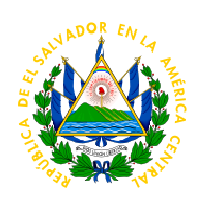El Salvador: Government
Key Figures
- Chief of State:
- President Nayib Armando Bukele Ortez
- Head of Government:
- President Nayib Armando Bukele Ortez
Overview
- Government Name:
- Republic of El Salvador
- Constitution:
- Adopted: 1983; Outlines the fundamental rights and guarantees of the person; the state, its form of government, and political system; nationality; economic order; organs of the government, powers, and competences; administrative regimen; responsibility of public functionaries; and scope, application, reform, and repeal.
- Government Type:
- Republic

Index of Economic Freedom
Country Risk Rating
Government Branches
| Main Powers | Election Process | Election Cycle 1 | |
|---|---|---|---|
| Executive | The president is the head of state and has executive power. The president observes and enforces the constitution, treaties, laws, and other legal dispositions; makes international treaties and conventions; directs foreign relations; and organizes, leads, and maintains the armed forces. |
The president is elected by absolute majority vote through a two-round system. |
5 years |
| Judicial | The supreme court is the highest court for appeal. |
Judges are elected by the legislative assembly on the recommendation of the national council of the judicature. |
Judges: 9 year terms with renewal of one-third of judges every 3 years |
| Legislative | The legislative assembly is the legislative branch of the unicameral body, decrees law and taxes, ratifies treaties, and establishes and regulates the national monetary system. |
The legislative assembly has 84 members elected through an open-list proportional representation system. |
3 years |
Regional Trade Blocs
No Regional Trade BlocsInternational Organization Participation [2]
Environmental Agreements [3]
Tax Information [2]
- Tax Authority:
- Ministry of Treasury
- Tax Name:
- VAT
Sources:
- ElectionGuide http://www.electionguide.org/
- EY, http://www.ey.com
- CIA World Factbook, https://www.cia.gov/the-world-factbook/
- U.S. Bilateral Relations Fact Sheets http://www.state.gov/r/pa/ei/bgn/


